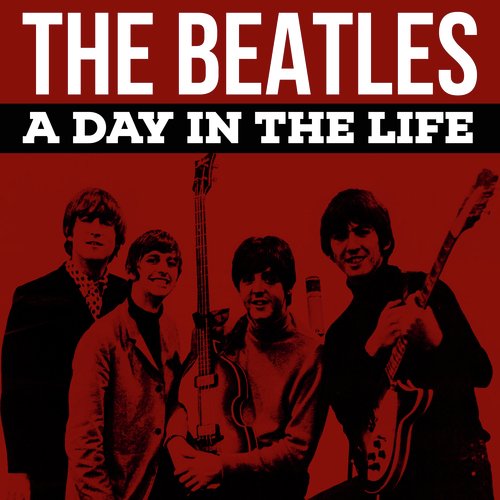
Writers: Lennon-McCartney
Recorded: January 19 and 20, February 3, 10 and 22, 1967
Released: June 2, 1967
Not released as a single
“A Day in the Life” is the sound of the Beatles on a historic roll. “It was a peak,” John Lennon told Rolling Stone in 1970, recalling the Sgt. Pepper period. It’s also the ultimate Lennon-McCartney collaboration: “Paul and I were definitely working together, especially on ‘A Day in the Life,’” said Lennon.
After their August 29th, 1966, concert in San Francisco, the Beatles left live performing for good. Rumors of tension within the group spread as the Beatles released no new music for months. “People in the media sensed that there was too much of a lull,” Paul McCartney said later, “which created a vacuum, so they could bitch about us now. They’d say, ‘Oh, they’ve dried up,’ but we knew we hadn’t.”
With Sgt. Pepper, the Beatles created an album of psychedelic visions; coming at the end, “A Day in the Life” sounds like the whole world falling apart. Lennon sings about death and dread in his most spectral vocal, treated with what he called his “Elvis echo” — a voice, as producer George Martin said in 1992, “which sends shivers down the spine.”
Lennon took his lyrical inspiration from the newspapers and his own life: The “lucky man who made the grade” was supposedly Tara Browne, a 21-year-old London aristocrat killed in a December 1966 car wreck, and the film in which “the English army had just won the war” probably referred to Lennon’s own recent acting role in How I Won the War. Lennon really did find a Daily Mail story about 4,000 potholes in the roads of Blackburn, Lancashire.
Lennon wrote the basic song, but he felt it needed something different for the middle section. McCartney had a brief song fragment handy, the part that begins “Woke up, fell out of bed.” “He was a bit shy about it because I think he thought, ‘It’s already a good song,’” Lennon said. But McCartney also came up with the idea to have classical musicians deliver what Martin called an “orchestral orgasm.” The February 10th session became a festive occasion, with guests like Mick Jagger, Keith Richards, Marianne Faithfull and Donovan. The studio was full of balloons; the formally attired orchestra members were given party hats, rubber noses and gorilla paws to wear. Martin and McCartney both conducted the musicians, having them play from the lowest note on their instruments to the highest.
Two weeks later, the Beatles added the last touch: the piano crash that hangs in the air for 53 seconds. Martin had every spare piano in the building hauled down to the Beatles’ studio, where Lennon, McCartney, Ringo Starr, Martin and roadie Mal Evans played the same E-major chord, as engineer Geoff Emerick turned up the faders to catch every last trace. By the end, the levels were up so high that you can hear Starr’s shoe squeak.
In April, two months before Sgt. Pepper came out, McCartney visited San Francisco, carrying a tape with an unfinished version of “A Day in the Life.” He gave it to members of the Jefferson Airplane, and the tape ended up at a local free-form rock station, KMPX, which put it into rotation, blowing minds all over the Haight-Ashbury community. The BBC banned the song for the druggy line “I’d love to turn you on.” They weren’t so far off base: “When [Martin] was doing his TV program on Pepper,” McCartney recalled later, “he asked me, ‘Do you know what caused Pepper?’ I said, ‘In one word, George, drugs. Pot.’ And George said, ‘No, no. But you weren’t on it all the time.’ ‘Yes, we were.’ Sgt. Pepper was a drug album.”
In truth, the song was far too intense musically and emotionally for regular radio play. It wasn’t really until the Eighties, after Lennon’s murder, that “A Day in the Life” became recognized as the band’s masterwork. In this song, as in so many other ways, the Beatles were way ahead of everyone else.
Appears On: Sgt. Pepper’s Lonely Hearts Club Band
